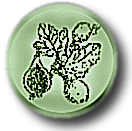Subsystem: NiFe hydrogenase maturation
This subsystem's description is:
For more information, please check out the description and the additional notes tabs, below
| Diagram | Functional Roles | Subsystem Spreadsheet | Additional Notes | |||||||||
Oops! We thought there was a diagram here, but we can't find it. Sorry
Variant Codes (first pass): 1 = Substantial number of components 9 = Misc. components Hydrogenase nickel incorporation protein HypA -- Zn finger protein that inserts nickel into some [NiFe] hydrogenases Hydrogenase nickel incorporation protein HybF -- Zn finger protein that inserts nickel into other [NiFe] hydrogenases Hydrogenase nickel incorporation-associated protein HypB -- a GTPase that is required for insertion of nickel by HypA and HybF Hydrogenase metallocenter assembly protein HypC -- Fe(CN)2(CO) scaffold and transfer complex component (with HypD) Hydrogenase metallocenter assembly protein HybG -- Fe(CN)2(CO) scaffold and transfer complex component (with HypD) Hydrogenase metallocenter assembly protein HypD -- Fe(CN)2(CO) scaffold and transfer complex component (with HypC or HybG) Hydrogenase metallocenter assembly protein HypE -- carbamoyl-dehydratase -CN synthesis (with HypE?) Hydrogenase metallocenter assembly protein HypF -- carbamoyl phosphate-dependent transcarbamoylase (to HypE) Synthesis of the cyanide: HypE and HypF proteins use cabamoylphosphate to add cyanide to the Fe in the formation of the [NiFe] center. [Blokesch, M., Paschos, A., Bauer, A., Reissmann, S., Drapal, N., and Bock, A. 2004. Analysis of the transcarbamoylation-dehydration reaction catalyzed by the hydrogenase maturation proteins HypF and HypE. Eur. J. Biochem. 271: 3428-36]. Note that there are two moles of cyanide per Fe. Carbamoylphosphate (= PO4-CONH2) | | HypF |/ | ATP |/ | (autocatalysis by HypF) |\ | Pi + PPi | HypF-AMP-CONH2 | | HypE-SH |/ | (autocatalysis by HypE) |\ | HypF + AMP | HypE-S-CONH2 | | ATP |/ | (autocatalysis by HypE) |\ | H2O + ADP + Pi | HypE-S-CN Formation of Fe-HypCD complex (HypCD complex does not form without iron): HypC + HypD | | Fe |/ | (autocatalysis by HypCD) | Fe-HypCD Transfer of the cyanide to iron (source and timing of CO addition seems to be unknown): Fe-HypCD | | 2 HypE-S-CN |/ | (autocatalysis by HypE?) |\ | 2 HypE-SH | Fe(CN)2-HypCD or Fe(CO)-HypCD | | 2 HypE-S-CN |/ | (autocatalysis by HypE?) |\ | 2 HypE-SH | Fe(CN)2(CO)-HypCD Dissociation of HypD might occur later (after interaction with hydrogenase large subunit): Fe(CN)2(CO)-HypCD | |\ | HypD | Fe(CN)2(CO)-HypC Metal insertion into the large subunit apoprotein: The order appears to be iron then nickel. HypA is the Ni-binding protein. HypB is the GTPase. HypC might remain bound until the nickel is added. Paralogs of HypA (n.b., HybF ) and HypC (n.b., HybG) can be specific for different hydrogenases. hydrogenase large subunit apoprotein | | Fe(CN)2(CO)-HypC |/ | (autocatalysis by HypC) |\ | HypC | Fe(CN)2(CO)-hydrogenase large subunit | | Ni + GTP |/ | HypAB |\ | GDP + Pi | NiFe(CN)2(CO)-hydrogenase large subunit | ||||||||||||




